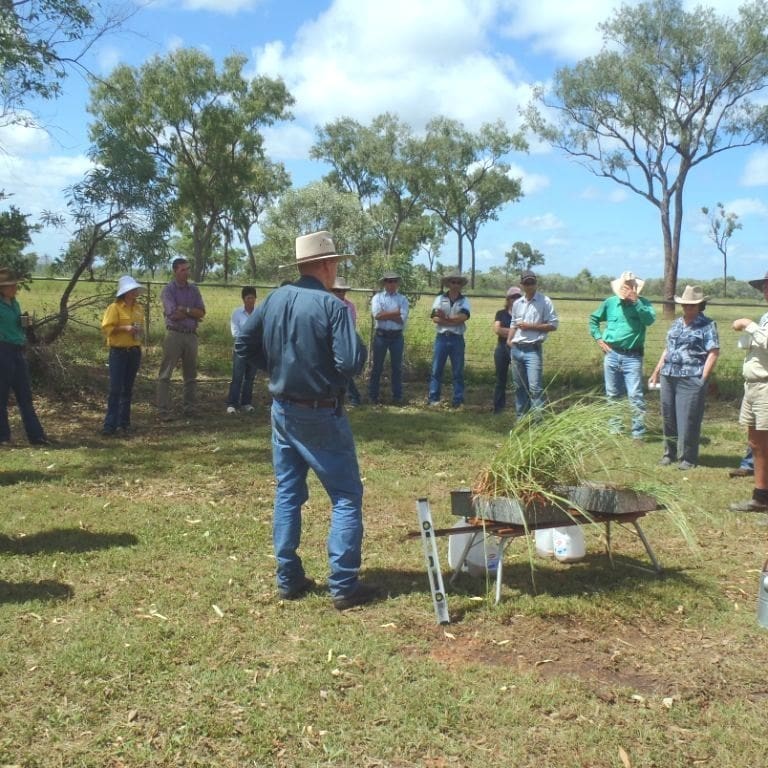 With northern Australia’s dry season just around the corner, beef producers in Central and Northern Queensland are starting to think about adjusting cattle numbers on their properties.
With northern Australia’s dry season just around the corner, beef producers in Central and Northern Queensland are starting to think about adjusting cattle numbers on their properties.
A series of workshops being rolled out between now and the middle of May by the Department of Agriculture, Fisheries and Forestry will help landholders to determine the best stocking rates for their grazing paddocks.
The first of the ‘Stocktake’ workshops was held at the Spyglass Research Station near Charters Towers last month, attracting a good attendance of local cattlemen and women.
Further workshops will be held at a series of regional locations:
- 20 April: Ravenswood Hall (Ravenswood)
- 23 April: Sayah Park (Yarrowmere Rd, Charters Towers)
- 23 April: Lancewood Station (Mt Coolon Rd, Mount Coolon)
- 24 April: Ellimeek Station (Flinders Highway, Pentland)
- 27 April: The Brook (Lynd Highway, Charters Towers)
- 30 April: Double D (Kilcummin Road, Clermont)
- 2 May: Carinya (Craven Rd, Alpha)
- 3 May: Mt Pleasant (Strathalbyn Rd, Bowen)
- 15 May: Kinrara, Gunawarra Road, Mount Garnet (via 'Glen Dhu').
Principal extension officer Bob Shepherd said the main focus was to provide producers with an objective method to calculate the sustainable stocking rates of their paddocks, and how to understand and monitor changes in land condition at a paddock scale.
“Sensible stocking rates maximise the chance of cattle doing well, while making sure there’s good ground-cover at the end of the dry season,” he said.
“Ultimately, it produces benefits for the land – in ensuring it doesn’t get overgrazed – as well as benefits for livestock production.”
There was excellent feedback received after the original Spyglass workshop, with most participants keen to take the information home and test it on their own paddocks, to see how the numbers match on a year-to-year basis, Mr Shepherd said.
“Participants gained a good understanding of how to monitor the condition of their property and determine if they are using stocking rates that match the carrying capacity of the paddock. We also provided information on identifying pasture species and their usefulness, which is so important.”
There are dozens of different pasture species present across the region and having a good handle on the various types could go a long way to determining the health of the land. For example, a pasture dominated by wiregrass can indicate a long history of overgrazing, whereas a dense stand of native bluegrass points towards a history of using sustainable stocking rates, Mr Shepherd said.
“The take-home message is, the better the stocking rate is matched to the amount of available pasture, the better the diet quality is going to be for the cattle.”
- To register for one of the workshops, contact Bob Shepherd on (07) 4761 5150.
